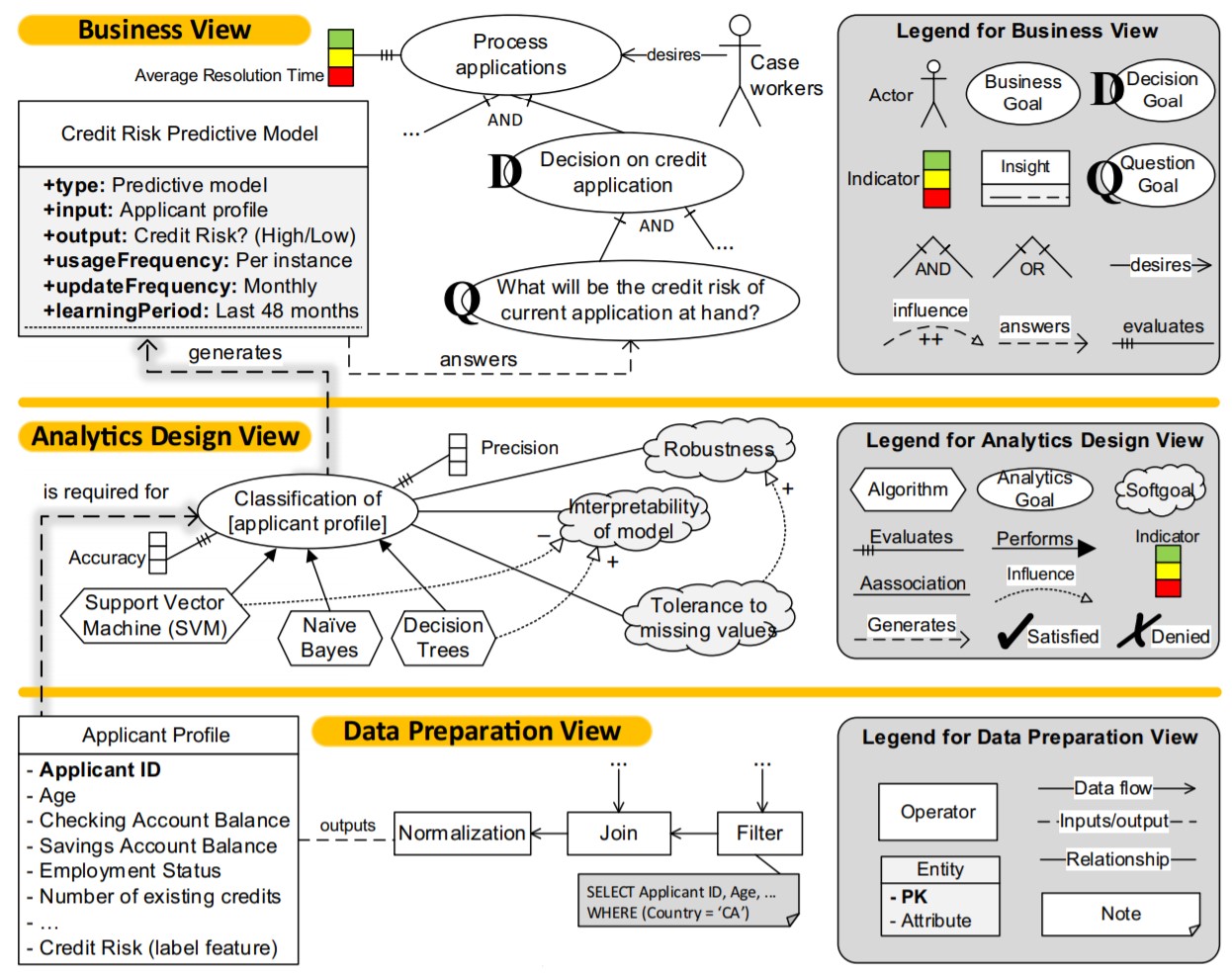The framework consists of three complementary modeling views, which together serve to mediate the viewpoints of business people, data scientists, and data engineers. In this page, we illustrates a simplified example of the three modeling views for the banking domain.
The Business View provides a conceptualization of machine learning requirements. It shows how Business Goals are refined into Decision Goals and Question Goals, and how such Questions can be answered by (machine-learning-generated) Insight elements.
The following figure is a simplified example of Business View for banking domain. It shows that a Case worker aims to Process applications and is measured by the Average resolution time metric. As part of processing applications, the case worker needs to make the Decision on credit applications. To make that decison over each application, the case worker needs to know What will be credit risk of current application at hand?. This question casn be answered by a Credit Risk Predictive Model. At runtime, this predictive model receivs an Applicant profile and labels their risk as High or Low per instance.
Business View
Analytics Design View
Data Preparation View
Linking the Three Views

In the next section, we will cover the language metamodels and definitions. You can also find more examples in the references page.